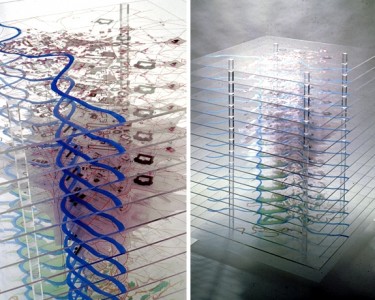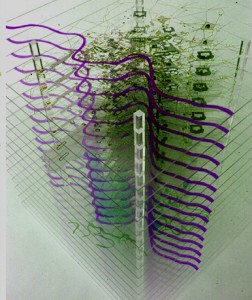Models with Depth
After winning the Rome Prize in 1999, Tom Leader’s chosen project was to create a temporal map of Rome. Relating time and historical data in the form of a drawing is a challenge enough, but expression in the form of a physical model is even more so. Tom Leader’s finished project relies on 15 acrylic layers to build a story of Rome’s past.
The Tiber River and some important churches act as a context that connects all layers as 200 year slices. Marshes come and go and buildings grow and recede, but the pulse of the city is captured. The model in its final stage is a combination of metal, glass, concrete, and plastic. It is not a trophy to the glory of humanity, but a true unsentimental representation of the terrain.
The process captures GIS computer data which is laser etched onto acrylic. The corner mounting cylinders appear to be plastic and align perfectly for full effect. An architecture student comments “there is a trick to get them to line up, drill all holes at once (tape layers together then drill press) or else they will never line up.” The cement base offers an ideal terrain like quality, while wood or plastic would also be acceptable.


